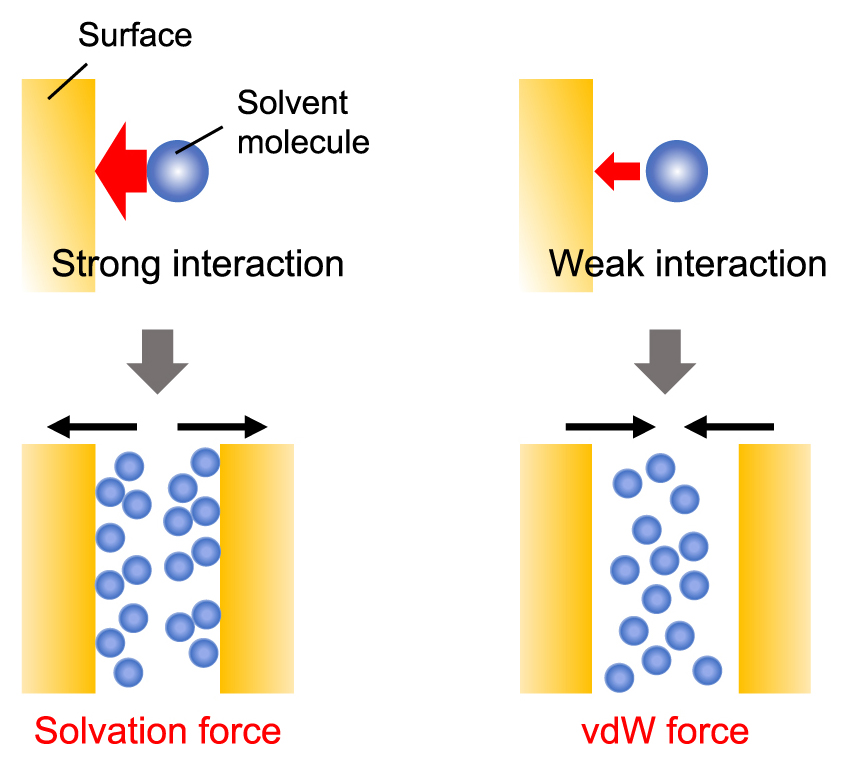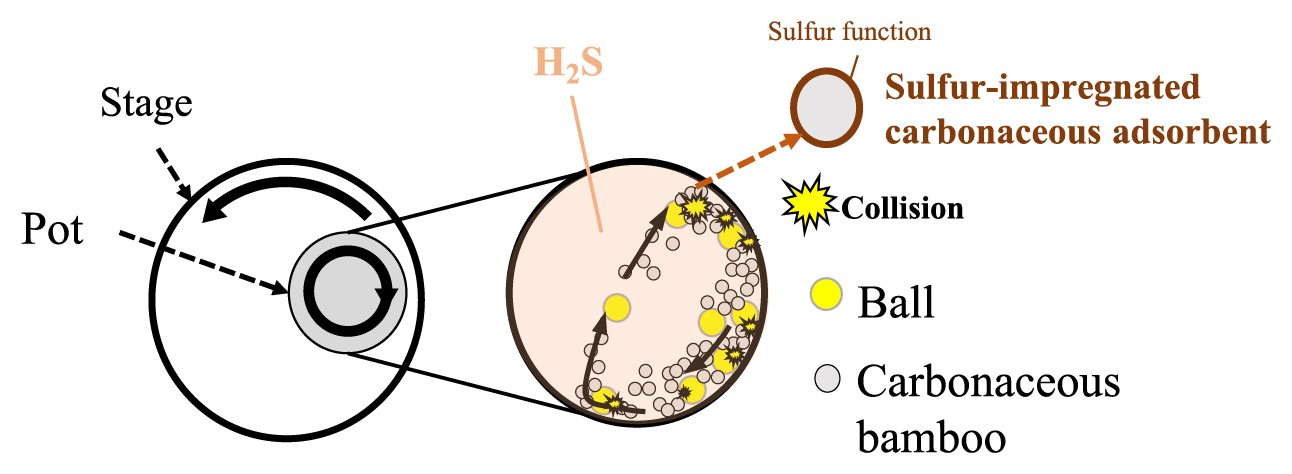- |<
- <
- 1
- >
- >|
-
2020Volume 28 Article ID: 20200
Published: May 25, 2021
Released on J-STAGE: May 25, 2021
Download PDF (1335K) -
2020Volume 28 Pages 1-2
Published: May 25, 2021
Released on J-STAGE: May 25, 2021
Download PDF (1138K) -
2020Volume 28 Pages 3-9
Published: May 25, 2021
Released on J-STAGE: May 25, 2021
Download PDF (2552K) -
2020Volume 28 Pages 10
Published: May 25, 2021
Released on J-STAGE: May 25, 2021
Download PDF (722K) -
2020Volume 28 Pages 11-13
Published: May 25, 2021
Released on J-STAGE: May 25, 2021
Download PDF (833K) -
2020Volume 28 Pages 14-16
Published: May 25, 2021
Released on J-STAGE: May 25, 2021
Download PDF (830K)
-
 2020Volume 28 Pages 18-25
2020Volume 28 Pages 18-25
Published: May 25, 2021
Released on J-STAGE: May 25, 2021
Editor's pickSince particle suspensions in organic solvents are used in various industries, characterizing the stability of suspensions in organic solvents is significant for handling such suspensions. However, the interaction forces between particles, which dominate suspension stability, in non-aqueous solvents have not been understood well. In this study, the author conducted the direct force measurements between solid surfaces in different organic solvents using atomic force microscopy and revealed that the affinity between surface functional groups and solvent molecules affect significantly the interaction forces. This will provide a novel insight to the stability characterization of particle suspensions in organic solvents.
Download PDF (2253K) -
2020Volume 28 Pages 26-30
Published: May 25, 2021
Released on J-STAGE: May 25, 2021
Download PDF (4434K) -
2020Volume 28 Pages 31-36
Published: May 25, 2021
Released on J-STAGE: May 25, 2021
Download PDF (2168K) -
2020Volume 28 Pages 37-43
Published: May 25, 2021
Released on J-STAGE: May 25, 2021
Download PDF (2153K) -
 2020Volume 28 Pages 44-48
2020Volume 28 Pages 44-48
Published: May 25, 2021
Released on J-STAGE: May 25, 2021
Editor's pickSince iron oxide magnetic particles exhibiting excellent magnetism are dark brown materials, it was difficult to prepare colored magnetic particles based on iron oxide magnetic particles. This article describes the creation and properties of colorless and full-color magnetic particles based on a polymer doped with holmium, a lanthanide with low colorability and a strong magnetic moment.
Download PDF (5558K) -
2020Volume 28 Pages 49-54
Published: May 25, 2021
Released on J-STAGE: May 25, 2021
Download PDF (3973K) -
2020Volume 28 Pages 55-63
Published: May 25, 2021
Released on J-STAGE: May 25, 2021
Download PDF (4340K) -
2020Volume 28 Pages 64-67
Published: May 25, 2021
Released on J-STAGE: May 25, 2021
Download PDF (1399K) -
2020Volume 28 Pages 68-73
Published: May 25, 2021
Released on J-STAGE: May 25, 2021
Download PDF (2549K) -
2020Volume 28 Pages 74-81
Published: May 25, 2021
Released on J-STAGE: May 25, 2021
Download PDF (2769K) -
2020Volume 28 Pages 82-87
Published: May 25, 2021
Released on J-STAGE: May 25, 2021
Download PDF (3106K) -
 2020Volume 28 Pages 88-92
2020Volume 28 Pages 88-92
Published: May 25, 2021
Released on J-STAGE: May 25, 2021
Editor's pickNanomedicines have attracted attention in the field of drug delivery technology. The size of nanomedicine plays important role in the biodistribution and its performance, such as antitumor effect and gene silencing activity. Therefore, development of size control techniques for nanomedicines is strongly desired. In this article, we report a precise size control method of poly lactic-co-glycolicacid(PLGA) nanoparticles encapsulated anti-tumor drugs using a microfluidic device.
Download PDF (1306K) -
2020Volume 28 Pages 93-97
Published: May 25, 2021
Released on J-STAGE: May 25, 2021
Download PDF (1955K) -
2020Volume 28 Pages 98-102
Published: May 25, 2021
Released on J-STAGE: May 25, 2021
Download PDF (2444K) -
2020Volume 28 Pages 103-108
Published: May 25, 2021
Released on J-STAGE: May 25, 2021
Download PDF (2560K) -
 2020Volume 28 Pages 109-117
2020Volume 28 Pages 109-117
Published: May 25, 2021
Released on J-STAGE: May 25, 2021
Editor's pickThe particle flowability can be improved by admixing particles smaller than the original particles (main particles). However, the details of this improving mechanism are not yet fully understood. In this article, it was investigated that the effects of adhesive force distribution at each of contact points due to admixing particle coating on improving the flowability by DEM simulation. As a result, non-uniform adhesive force distribution had a larger discharge flow rate. This result suggested that the adhesive force distribution at each of contact points would also contribute to improving the flowability in a smaller particle admixing system.
Download PDF (4132K) -
2020Volume 28 Pages 118-123
Published: May 25, 2021
Released on J-STAGE: May 25, 2021
Download PDF (3303K) -
 2020Volume 28 Pages 124-128
2020Volume 28 Pages 124-128
Published: May 25, 2021
Released on J-STAGE: May 25, 2021
Editor's pickOne of the major challenges in the last decades has been how to provide sufficient energy to the world’s population. It is nowadays clear that fossil fuels, which currently supply about 85% of our necessary energy, will be unable to satisfy the increased energy demand in the future. In this article, authors have proposed an interesting approach for designing a pn junction semiconductor photocatalyst. Results show that a nano-level combination of n-type BiVO4 and p-type BiOX enhances the photocatalytic activity as compared to each semiconductor.
Download PDF (3812K)
-
2020Volume 28 Pages 130-134
Published: May 25, 2021
Released on J-STAGE: May 25, 2021
Download PDF (2136K) -
2020Volume 28 Pages 135-138
Published: May 25, 2021
Released on J-STAGE: May 25, 2021
Download PDF (1742K) -
2020Volume 28 Pages 139-142
Published: May 25, 2021
Released on J-STAGE: May 25, 2021
Download PDF (2000K) -
2020Volume 28 Pages 143-147
Published: May 25, 2021
Released on J-STAGE: May 25, 2021
Download PDF (1337K) -
2020Volume 28 Pages 148-152
Published: May 25, 2021
Released on J-STAGE: May 25, 2021
Download PDF (1213K) -
2020Volume 28 Pages 153-156
Published: May 25, 2021
Released on J-STAGE: May 25, 2021
Download PDF (1266K) -
2020Volume 28 Pages 157-160
Published: May 25, 2021
Released on J-STAGE: May 25, 2021
Download PDF (1021K) -
2020Volume 28 Pages 161-165
Published: May 25, 2021
Released on J-STAGE: May 25, 2021
Download PDF (2229K) -
2020Volume 28 Pages 166-170
Published: May 25, 2021
Released on J-STAGE: May 25, 2021
Download PDF (2109K)
- |<
- <
- 1
- >
- >|



























